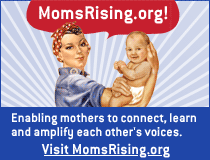 The first few days after the birth of a baby can be filled with joy mixed with anxiety, fatigue, and many unknowns. Often, parents are sent home from hospitals with a confusing task list of counting wet diapers, dirty diapers, feedings, burpings, or watching for jaundice. Whether a baby is born preterm or at term, with or without complications, parents can be overwhelmed with concern for their new baby's health in those first few days.
The first few days after the birth of a baby can be filled with joy mixed with anxiety, fatigue, and many unknowns. Often, parents are sent home from hospitals with a confusing task list of counting wet diapers, dirty diapers, feedings, burpings, or watching for jaundice. Whether a baby is born preterm or at term, with or without complications, parents can be overwhelmed with concern for their new baby's health in those first few days.
For children born with complications, including drug dependency, kangaroo care becomes a vital part of the caregiving routine. Kangaroo care is a way of holding an infant, wearing only a diaper and a cap, so there is skin-to-skin contact with his parent. Research shows that the skin-to-skin contact improves the infant's survival rate, stabilizes both heart and breathing rates, and improves sleep. Preterm infants with regular kangaroo care generally grow stronger and leave the hospital sooner than infants cared for with incubators. In one study, mothers who participated in kangaroo care were less depressed and better in-tune with their infant's needs.
Babywearing benefit #4: Babywearing regulates infant heart rate, temperature, breathing, and sleeping patterns.
If close contact with a caregiver proves to be so beneficial for the preterm infant, it becomes easy to see the potential benefit for any newborn, regardless of health status. Babies love, need, and even crave their parent's touch. Wearing a sling or other soft carrier facilitates this by making it possible to keep baby closer longer, without arm fatigue, and while allowing the parent freedom to move. An additional plus to using baby carriers in kangaroo care is that nurses or other hospital personnel are able to carry on with light duties while still providing the closeness the infants need.
In the womb, babies are immersed in a warm, fluid environment, gently rocked back and forth and shielded from harsh light and sound while comforted by the muffled rhythm of the mother's heartbeat and voice. Babywearing can help infants in their transition from womb to world, giving them a familiar heartbeat to rest against. Held close, babies' bodies learn to properly regulate themselves, taking their cues both physically and hormonally from the parents' bodies. Even now, my 2-year old daughter instantly calms down when placed in the carrier. With her body able to fully relax, she transitions to naptime much more easily than if left to soothe herself.
You can read more on kangaroo care in an article by Lynn Mettler at iParenting.com and in an article by Lisa Albright . Continue reading this series to learn more about the benefits of babywearing.
Friday, August 17, 2007
Human incubators - babywearing benefit #4
Read more like this: babywearing, babywearing benefits
Subscribe to:
Post Comments (Atom)



























No comments:
Post a Comment